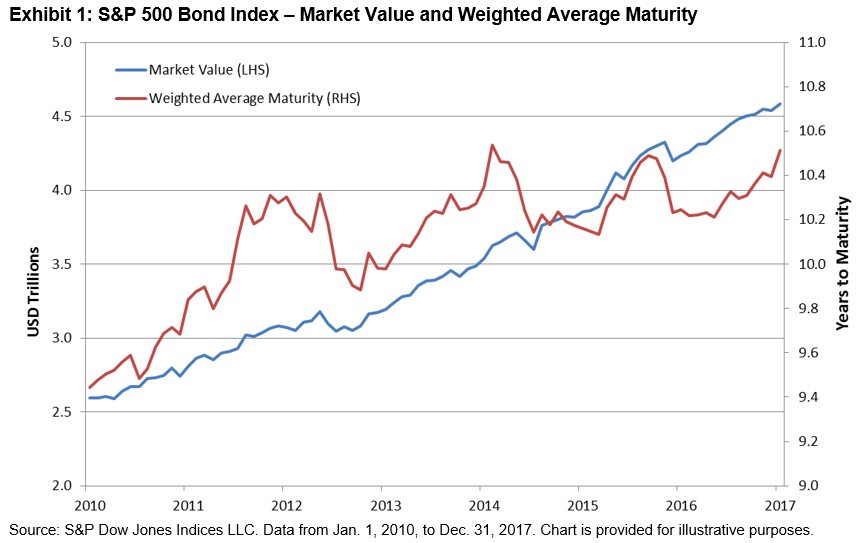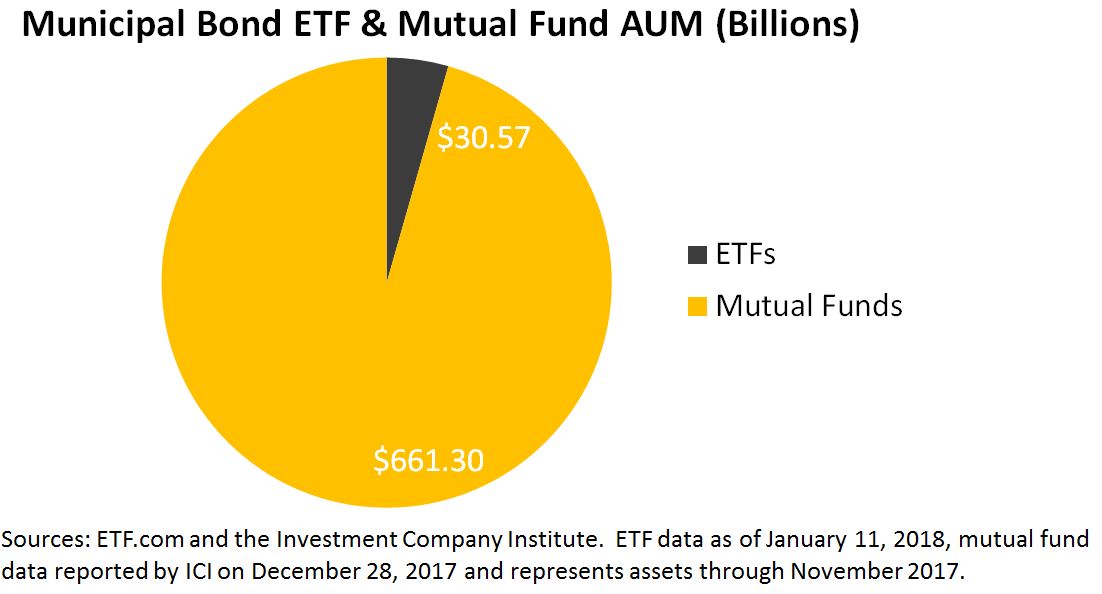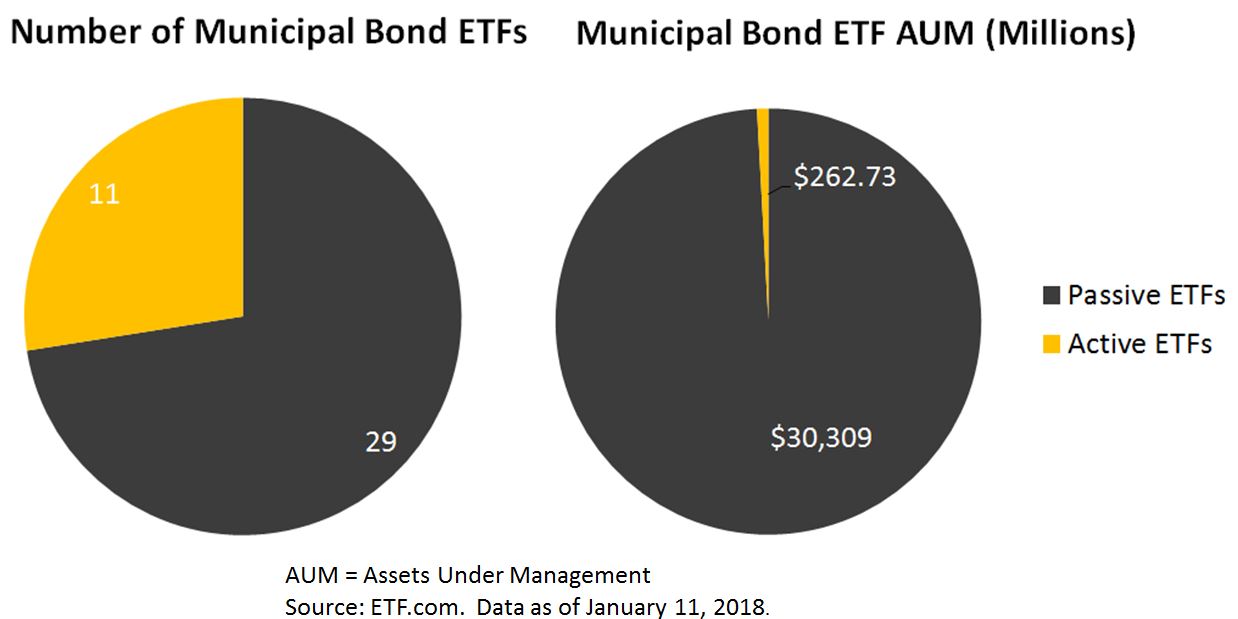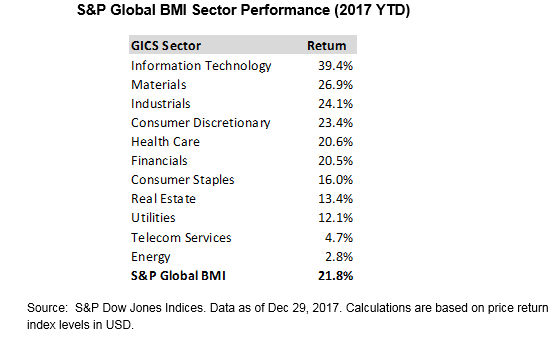Capital markets in India had a bull run in 2017 and gave exponential returns across size, segments, and sectors. In this blog, we will analyze how capital markets in India have performed in 2017.
Exhibit 1 and 2 showcase returns for India’s four leading size indices in 2017.
| Exhibit 1: One-Year Absolute Returns of Size Indices | |||
| INDEX | INDEX VALUE ON DEC. 31, 2016 | INDEX VALUE ON DEC. 31, 2017 | ONE-YEAR ABSOLUTE RETURN (%) |
| S&P BSE SENSEX | 37,472 | 48,550 | 29.56 |
| S&P BSE Large Cap | 3,707 | 4,877 | 31.55 |
| S&P BSE Mid Cap | 13,938 | 20,893 | 49.90 |
| S&P BSE Small Cap | 13,936 | 22,408 | 60.80 |
Source: S&P Dow Jones Indices LLC. Data from Dec. 31, 2016, to Dec. 31, 2017. Past performance is no guarantee of future results. Table is provided for illustrative purposes.
Exhibit 2: Index Total Returns
Source: S&P Dow Jones Indices LLC. Data from Dec. 31, 2016, to Dec. 31, 2017. Index performance based on total return in INR. Past performance is no guarantee of future results. Chart is provided for illustrative purposes.
From Exhibits 1 and 2, we can see that all four indices performed well, and returns have been promising for large-, mid-, and small-cap segments. The returns of the small- and mid-cap segments have been better than the large-cap segment. The S&P BSE SmallCap and S&P BSE MidCap posted one-year absolute returns of 60.80% and 49.90%, respectively, while the S&P BSE LargeCap and S&P BSE SENSEX returned 31.55% and 29.56%, respectively.
Exhibits 3 and 4 showcase returns for the 11 leading sector indices for India in 2017.
| Exhibit 3: One-Year Absolute Returns in Sector Indices | |||
| INDEX | INDEX VALUE ON DEC. 31, 2016 | INDEX VALUE ON DEC. 31, 2017 | ONE-YEAR ABSOLUTE RETURN (%) |
| S&P BSE Realty | 1,357 | 2,813 | 107.24 |
| S&P BSE Basic Materials | 2,722 | 4,298 | 57.90 |
| S&P BSE Consumer Discretionary | 3,286 | 5,116 | 55.66 |
| S&P BSE Telecom | 1,175 | 1,775 | 51.10 |
| S&P BSE Finance | 4,781 | 6,892 | 44.15 |
| S&P BSE Energy | 3,671 | 5,272 | 43.62 |
| S&P BSE Industrials | 3,174 | 4,419 | 39.24 |
| S&P BSE Fast Moving Consumer Goods | 9,967 | 13,283 | 33.26 |
| S&P BSE Utilities | 2,111 | 2,796 | 32.48 |
| S&P BSE Information Technology | 12,233 | 13,859 | 13.29 |
| S&P BSE Healthcare | 16,131 | 16,309 | 1.10 |
Source: S&P Dow Jones Indices LLC. Data from Dec. 31, 2016, to Dec. 31, 2017. Past performance is no guarantee of future results. Table is provided for illustrative purposes.
Exhibit 4: Index Total Returns
Source: S&P Dow Jones Indices LLC. Data from Dec. 31, 2016, to Dec. 31, 2017. Index performance based on total return in INR. Past performance is no guarantee of future results. Chart is provided for illustrative purposes.
From Exhibits 3 and 4, we can see that most of the sector indices have posted promising returns. The S&P BSE Realty had the best return in 2017, with 107.24%, followed by the S&P BSE Basic Materials, S&P BSE Consumer Discretionary, and S&P BSE Telecom, which had one-year absolute returns of 57.90%, 55.66%, and 51.10%, respectively. The S&P BSE Information Technology and S&P BSE Healthcare were the worst-performing indices in 2017, with absolute returns of 13.29% and 1.10%, respectively.
To summarize, we can say that the bulls had their way in 2017, and indices across various size, segments, and sectors have given exponential returns.
The posts on this blog are opinions, not advice. Please read our Disclaimers.
















